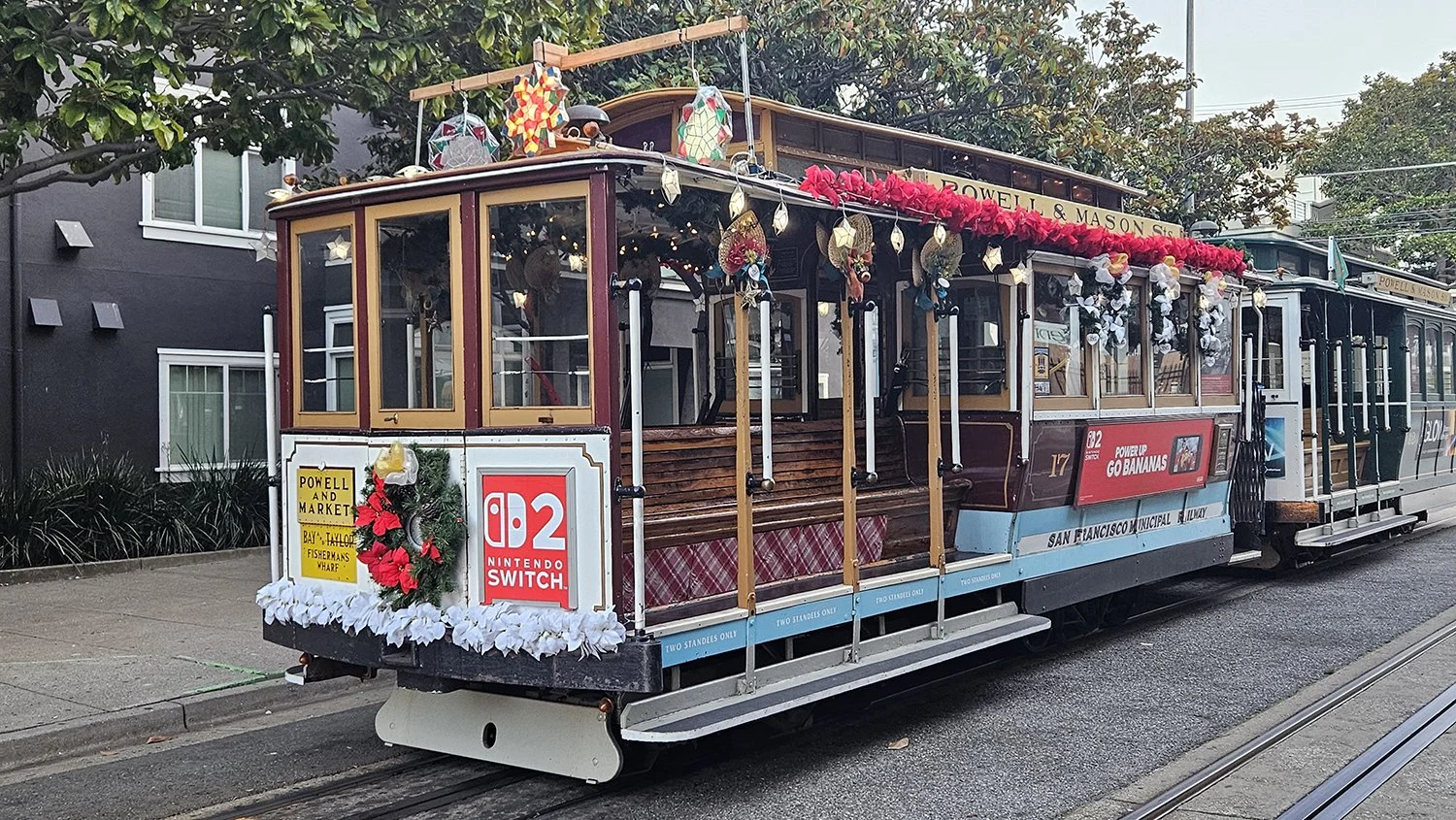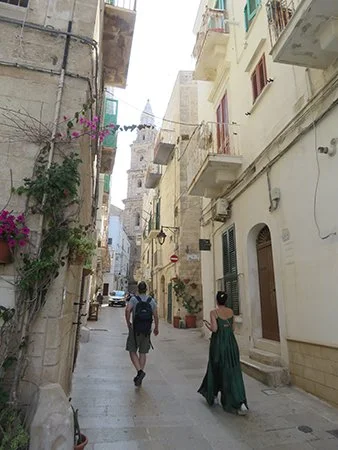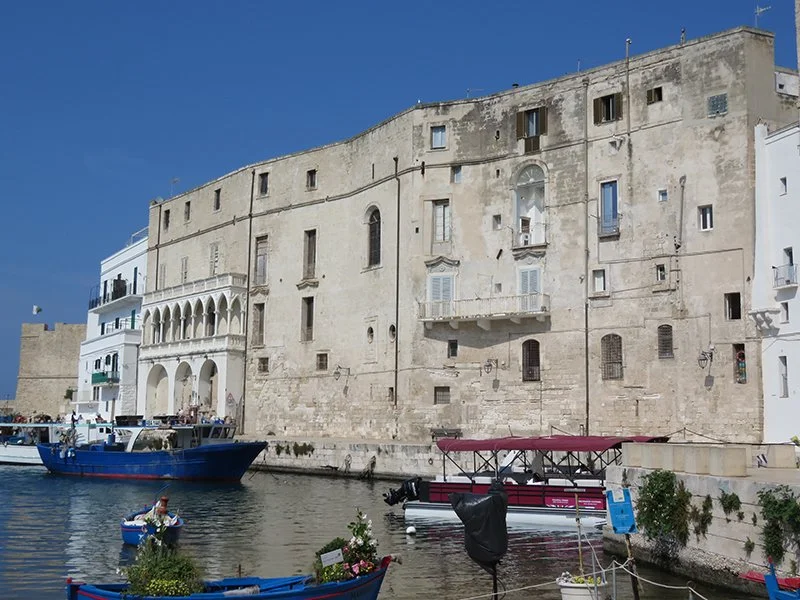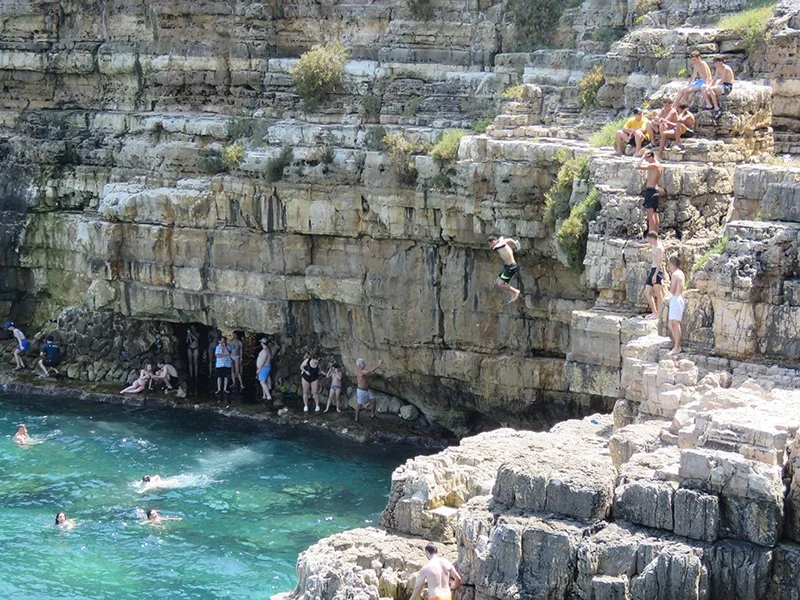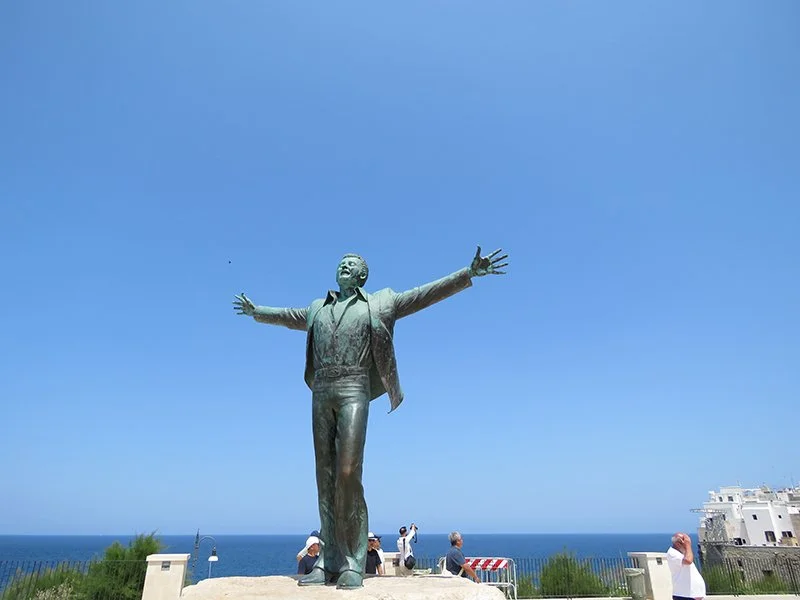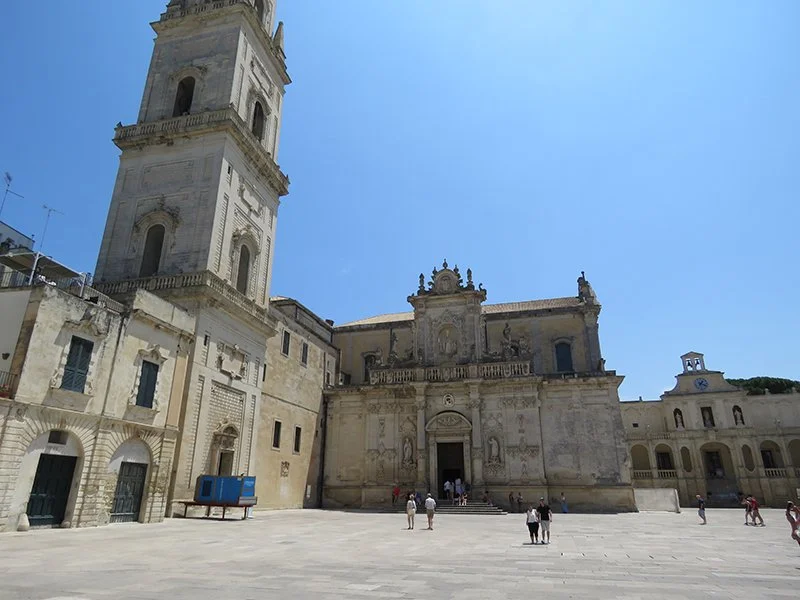Puglia Pulls You
/The kind of labyrinthine streets you see in the small towns of Puglia. (Photo by Criselda Yabes)
As summer started we decided that Puglia was better than museum-hopping or monument-gazing. It lies on the eastern leg of Italy, down to its heel. We landed first in Bari on the upper side, spending just a night there in a Bed & Breakfast that had no breakfast. We had pizza in an obscure corner instead (though it was better what I normally get in France). Bari was good for churches in its old town quarter, as we would discover in other towns as well.
But the news that TrenItalia was going on a strike ruined my mood and altered our plans. I wanted to go from town to town by train, ultimately reaching Gallipoli, the beautiful city on a rampart on the southern edge. From Bari, we managed to stay in Monopoli for a couple of days and had a side tour of its neighbor Polignano a Mare, which was far more crowded with tourists and an obviously Instagram-able location.
The mad crowd at Polignano a Mare. (Photo by Criselda Yabes)
I was itching for Gallipoli for no reason other than my intuition. We just had to get there, and the only solution was to rent a car. We lucked out on a Fiat Panda that was available on the day of the train strike. I was right about Gallipoli: we found Giorgio, the owner of Punta Cutieri, a Bread & Breakfast facing the Ionian Sea– and yes, he served breakfast, a copious one, every morning on a rooftop terrace where we could watch the gulls on the cubic water breaker.
The city on a rampart at dusk. (Photo by Criselda Yabes)
Finding Giorgio was done the traditional way by email, not by any booking apps. His email address was on the French Guide du Routard. He responded quickly, gave us a discount, saved us a room despite a tight schedule. From now on, when I think of Gallipoli, I will be thinking of Giorgio. Because of him, it felt like we found the right spot in Puglia.
The old port of Monopoli. (Photo by Criselda Yabes)
The rampart occupies the small island itself, connected to the city by a short bridge. By and large, it is like Bari or Monopoli or even Polignano in that homes were built around labyrinthine streets dotted with churches, restaurants, and cafes around the piazzas, souvenir shops along wider streets, and galleries in certain chic neighborhoods. What Gallipoli has is the beach– spiaggia–and the bracing waft of the sea air. The other shores were rocky; the cliffs in Polignano a Mare, for instance, has become famous for jumping off heights into the sea for the fun of it. Check the Internet and you’ll find tons of these images.
From the seaside cliffs of Polignano a Mare, there's always a jump off. (Photo by Criselda Yabes)
The water was not warm enough, but it had a tonic effect. I swam, sunbathed, swam again, and tried to stay under a beach umbrella in the scorching sun of more than 30C. In the late afternoons, it was the place to go while waiting for the sunset in a tableau of the lighthouse in the foreground. Some women were doing tai-chi or yoga or filming themselves with their phones even in the water. I can still see the image of a young woman in a mint-green bikini, the color blending with her evenly chocolate tan, meditating in the posture of a yogi.
Having just recently spent time on Sulu island in southern Philippines, where we were told to swim in jeans or anything close to pajamas, seeing women wearing the skimpiest bikini in Italy was a bit jarring. The culture shock wore off when I put on my bikini, though a tad more conservative than theirs. We could have gone to other beaches but time was short. Giorgio pointed us to Porto Selvaggio, a somewhat forested coast that locals go to more than 10 kilometers away. We bought sandwiches for a small picnic and stayed there the entire day.
The water in Polignano a Mare was just as enticing, except that from above the cliffs, hordes of tourists watch you as if they were in a balcony looking down on ants swimming in the blue. My partner couldn’t resist the sea; I bought him a pair of swimming trunks for just a short dip while the famous recorded voice of Domenico Modugno, whose life-sized bronze statue stood on the piazza, belted out Volare from tour boats.
The man who made singing 'Volare' famous all over the world. (Photo by Criselda Yabes)
At the end of the day, Polignano’s treat was having one of its gelaterias win the Gold Cup of gelatos. For three euros and fifty cents, you can have two scoops (compared with just one that you would get in France), and I couldn’t have enough of the pistachio flavor. Food here is relatively lower in price, but I’m afraid that once tourism overruns it, as has been the case in many parts of Italy and Europe in general, a travel budget could go bust.
Giorgio knows where we could have the best pizza even if the restaurant was tacky in the common tourist section, and it happened to be owned by an Albanian. He gave us a 10-euro discount card for lunch at Mamangi, which serves a sumptuous vegetarian dish of homemade orecchiette pasta (there’s a lady there demonstrating how the pasta is done) with a mean yellow cherry tomato sauce. For dessert, we had lemon tiramisu so heavenly you could only dream of it.
On our last night, I had to have more of that tiramisu. The other treat we had, not related to food, was Giorgio giving us the suite on the ground floor that the cleaners described as “antico.” Above the bed were frescoes from a century I can’t define, and beside the bed was a cistern covered in glass. Giorgio said this was a family home before he turned it into a Bed & Breakfast and that long before that, it was a chapel. Our previous room had a ceiling shaped to an ogive. A new set of clients were arriving as we were about to leave.
We drove back to Monopoli. We made a good decision to not spend our last night in the historic city of Lecce (pronounced le-che), which is nearest to Gallipoli and the airport in Brindisi from where we were to fly. We had already spent a few hours in Lecce on our way to Gallipoli, to see what everyone said we should–an enclave of baroque architecture where royalty and wealthy merchants lived in centuries past. It was all beige to me, giving the sensation of being in a ghost town of monuments if not for some tourists traipsing around.
In the historic enclave of Lecce, you will see beige Baroque architecture everywhere. (Photo by Criselda Yabes)
What I would remember most of being in Lecce was having a delicious lunch of watermelon salad and hummus with beets and tofu. Our dessert was the best vegan cheesecake I have ever tasted, topped with avocado and lime. The Too Much Brunch Café was so relaxing I had to force myself to leave just to see the Jewish quarter, a magnificent basilica, and the grand gate.
So we were back in Monopoli further up to return the rented car, taking us almost two hours on the road. What we liked about this small town was not so much as walking around the old port town as discovering a few gems outside of it. In one street near the mini apartment we booked on Via Roma was a fruit and vegetable shop that had the most extraordinary olives. The shopkeeper said his mother, who lives in the town of Corato, had brined it, therefore the olives were called coratino. We bought two containers and stored it in our backpacks to carry back home with us.
I was right about Gallipoli: we found Giorgio, the owner of Punta Cutieri, a Bread & Breakfast facing the Ionian Sea– and yes, he served breakfast, a copious one, every morning on a rooftop terrace.
We had our last drink at the Caffe del Corso before walking to the train station, which would take us to the Brindisi airport. What sets the Italian waiters apart from the French was their sense of conviviality. Just like Giorgio, the waiter in this café made you feel at home, like a gentle soul greeting long-lost friends.
The train was running again (it’s cheaper too), and we made it to the airport in no time.
For my next trip to Italy, I would have to go to Naples or Napoli where Giorgio said I must see the sculpture of The Veiled Christ. Then on to Rome and all that we know is grand and beautiful. But Gallipoli has become, indeed, my beautiful city, and here I will come back.
Criselda Yabes is a writer and journalist who has written about a dozen books, some of them on the military and Mindanao.
She now lives in northeast France and comes home to the Philippines when life calls for it.

